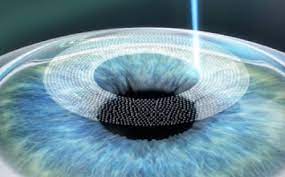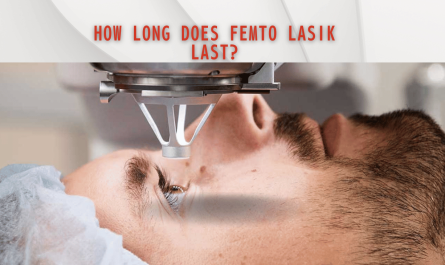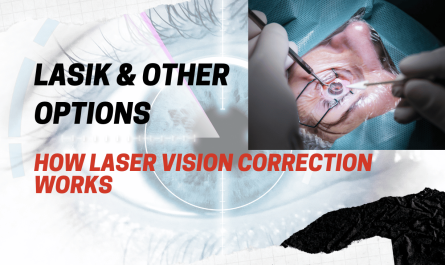Introduction
In recent years, technological advancements in the field of ophthalmology have provided individuals with various options to correct refractive errors and achieve clearer vision. Two popular procedures that have gained widespread recognition are LASIK (Laser-Assisted In Situ Keratomileusis) and Femto LASIK (Femtosecond Laser-Assisted In Situ Keratomileusis).
Both procedures aim to improve vision, but they differ in their techniques and technologies.
LASIK (Laser-Assisted In Situ Keratomileusis)

LASIK is a widely performed refractive surgery that uses a laser to reshape the cornea of the eye. The technique involves creating a thin flap on the cornea, lifting it, and then using a laser to reshape the underlying corneal tissue. After the reshaping is complete, the flap is repositioned, allowing for a quicker recovery compared to traditional methods.
Advantages:
- Quick Recovery
- Has a well-established safety profile with a high success rate.
- Minimal Discomfort
Disadvantages:
- The creation of a corneal flap can lead to complications such as flap dislocation or inflammation.
- LASIK may have limitations in addressing certain types of refractive errors with precision.
Femto LASIK (Femtosecond Laser-Assisted In Situ Keratomileusis):

Femto LASIK, often referred to as bladeless LASIK, uses a femtosecond laser to create the flap in the cornea. This advanced technology provides a higher level of precision and customization in the surgical process.
Advantages:
- Femto LASIK offers a more precise flap creation process, reducing the risk of flap-related complications.
- The femtosecond laser allows for a personalized corneal flap design tailored to each patient’s unique eye anatomy.
- Reduced Discomfort
Disadvantages:
- High Cost
- Surgeons may require additional training to master the use of femtosecond laser technology.
Which is the better option?
- The femtosecond laser enables surgeons to create a flap with greater precision, leading to a more customized treatment and potentially better visual results.
- The bladeless approach of Femto LASIK may reduce the risk of certain flap-related complications associated with traditional LASIK.
- The precision of femtosecond lasers may contribute to faster healing times for some patients.
- Traditional LASIK tends to be more cost-effective than Femto LASIK.
Conclusion:
Ultimately, the choice between both depends on individual factors like eye health, budget, and personal preferences. this has a long history of success and may be suitable for many patients, while Femto LASIK offers enhanced precision and customization. Both have proven to be effective in providing improved vision and reducing the need for glasses or contact lenses, making them viable options for those seeking refractive surgery.
For anyone considering LASIK surgery, consulting an experienced ophthalmologist at Laxmi Eye Hospital can guide you through the best treatment options available. LASIK could be the key to achieving clear, sharp vision and a life free from corrective eyewear. Book an appoinment today.




